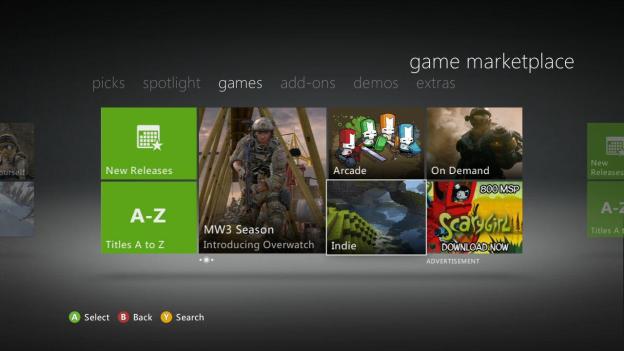 There were many trends that guided the video game industry across 2012: The rise of crowd-funding development through Kickstarter; the expansion of more developers into free-to-play gaming; and the death of the subscription-based MMORPG to name a few. The most noticeable trend in the industry, HOWEVER, created a pall that hung over it entirely.
There were many trends that guided the video game industry across 2012: The rise of crowd-funding development through Kickstarter; the expansion of more developers into free-to-play gaming; and the death of the subscription-based MMORPG to name a few. The most noticeable trend in the industry, HOWEVER, created a pall that hung over it entirely.
As big studios closed en masse and retail tracking firms reported more and more dour data each quarter, it was clear that 2012 marked the end of the video game industry as primarily a business of physical goods. Cartridges, Blu-ray discs, and every other format began to make way to digital distribution. According to the NPD Group, the digital industry is growing steadily but nowhere near fast enough to replace revenues lost from physical sales.
The breakdown: In the United States, video game sales (not including hardware like consoles or accessories) totaled $14.8 billion. Of that total, $5.92 billion came from digitally distributed content, including games, DLC, in-app/game purchases and other content. That is a 16 percent jump over digital totals from 2011. Physical game sales, meanwhile, came to $8.88 billion total, a drop of 21-percent from the previous year. Part of that is due to the lack of software released last year. Physical sales are declining faster than digital sales are increasing, thus the 9-percent drop in total video game revenue in 2012.
It’s important to note that the NPD Group’s data isn’t exact, since many leading digital distribution platforms don’t publicly disclose their sales data. Valve, for example, doesn’t publicly state how much money Steam makes each year. Even the NPD Group’s retail data isn’t 100-percent accurate. It’s only in the last eighteen months that the NPD Group started including sales data from Walmart, one of the largest video game retailers in the country. Its data is accurate and reliable enough to recognize a trend that is fundamentally altering the gaming industry, though.
The question now is whether or not 2013 will see digital revenues increase at a faster rate? Growth in the digital market is steady, but not swift. Digital revenue grew just 14 percent between 2010 and 2011, compared to the 16 percent jump between 2011 and 2012. There are also a number of new gaming machines on the horizon that could reinvigorate the physical goods market. Sony’s PlayStation 4 (Orbis) and Microsoft’s Xbox 720 (Durango) could spur a recovery of the physical market. In 2012, there were 29-percent less games released across all platforms (barring mobile), so the coming of new consoles and launch games could prove to be a major boon for the industry. The technology would need to excite consumers in a new way though, as the Wii U’s abysmal game sales show that new hardware alone isn’t enough to get people spending.
Editors' Recommendations
- The best cozy games
- We ranked all the best (and worst) video game system startup sounds
- Best Prime Day video game deals for 2021: The best sales you can still shop
- The bestselling games of 2020
- Target Gaming Sale: Cheap games for Nintendo Switch, PS4, and Xbox One


